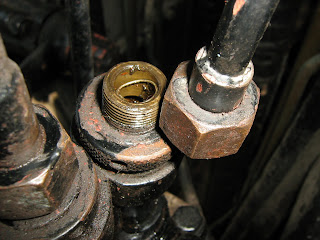Not the normal car boot contents I thought (with raised eyebrows) and, at Norman's invitation, went to have a look.
Although 7109 is a 12 inch to the foot scale, I've long admired the amazing amount of time and effort that goes into model locos. This was another moment of admiration.
 |
| Car boot contents (1) |
 |
| Car boot contents (2) |
 |
| Amazing detail (and not just the boot catch!) |
 |
| Right hand side |
 |
| Nearing completion (June 2011) |
 |
| Sentinel 8805 (Photo Tony Thomas) |
 |
| And again (Photo Tony Thomas) |














































